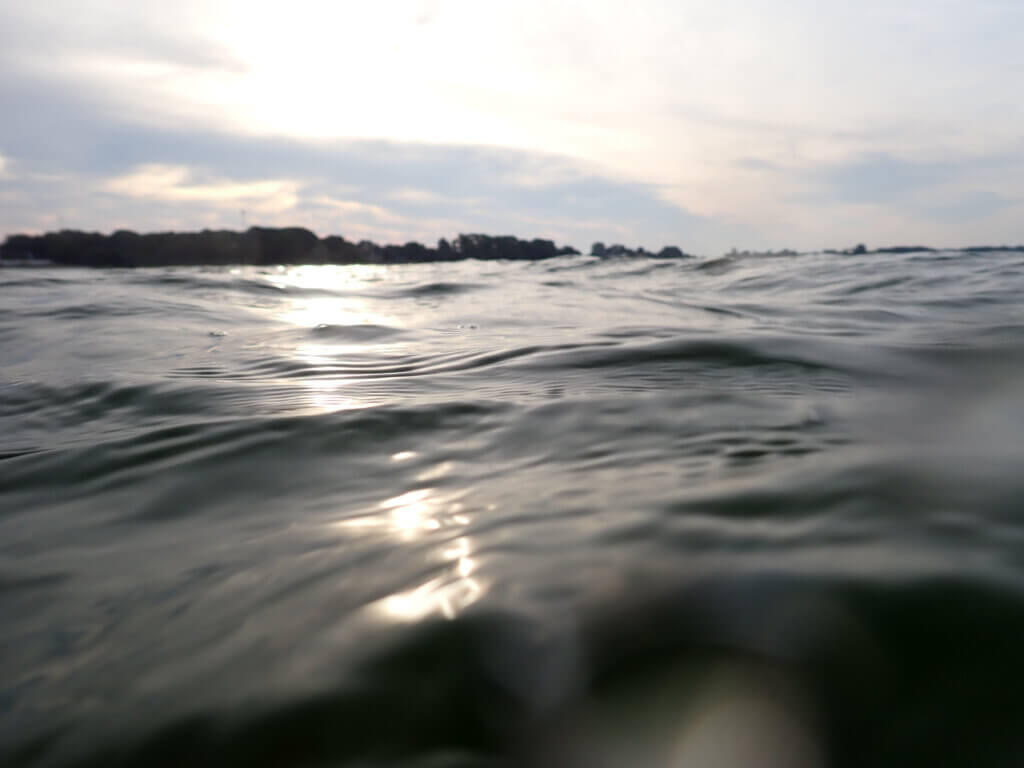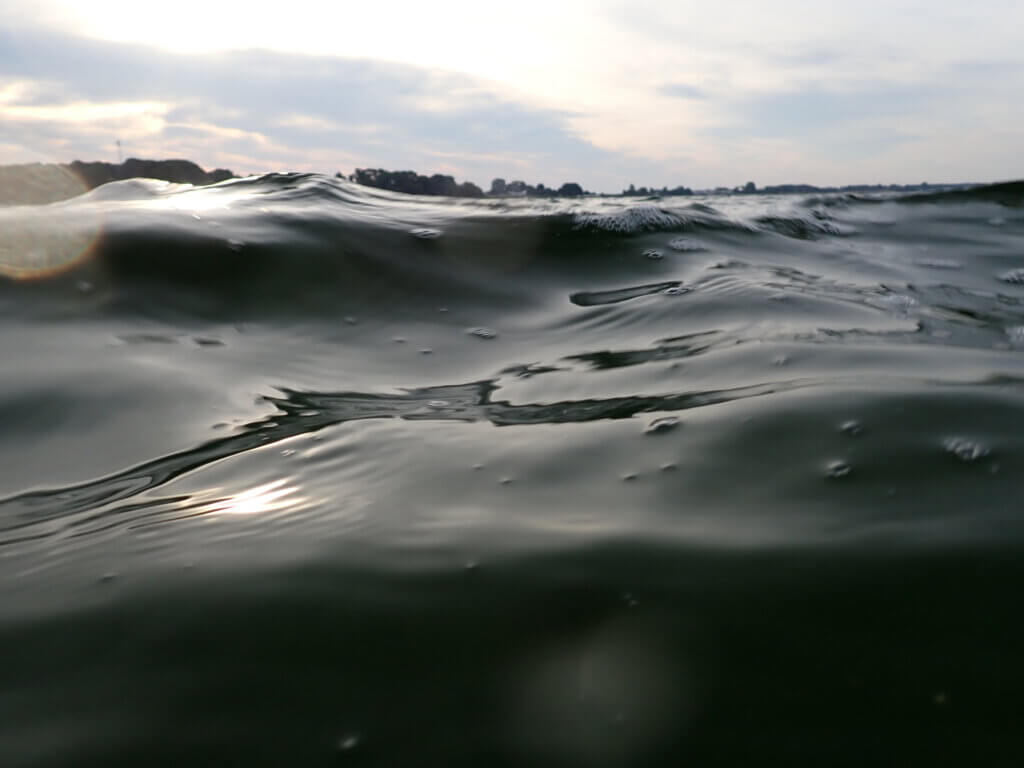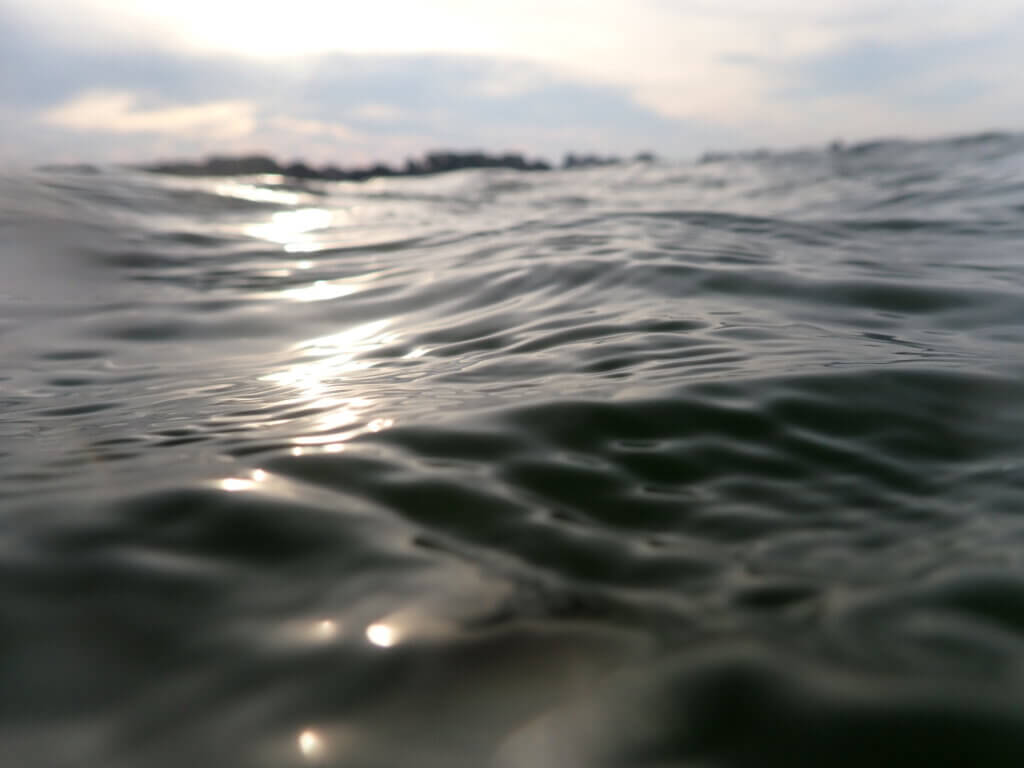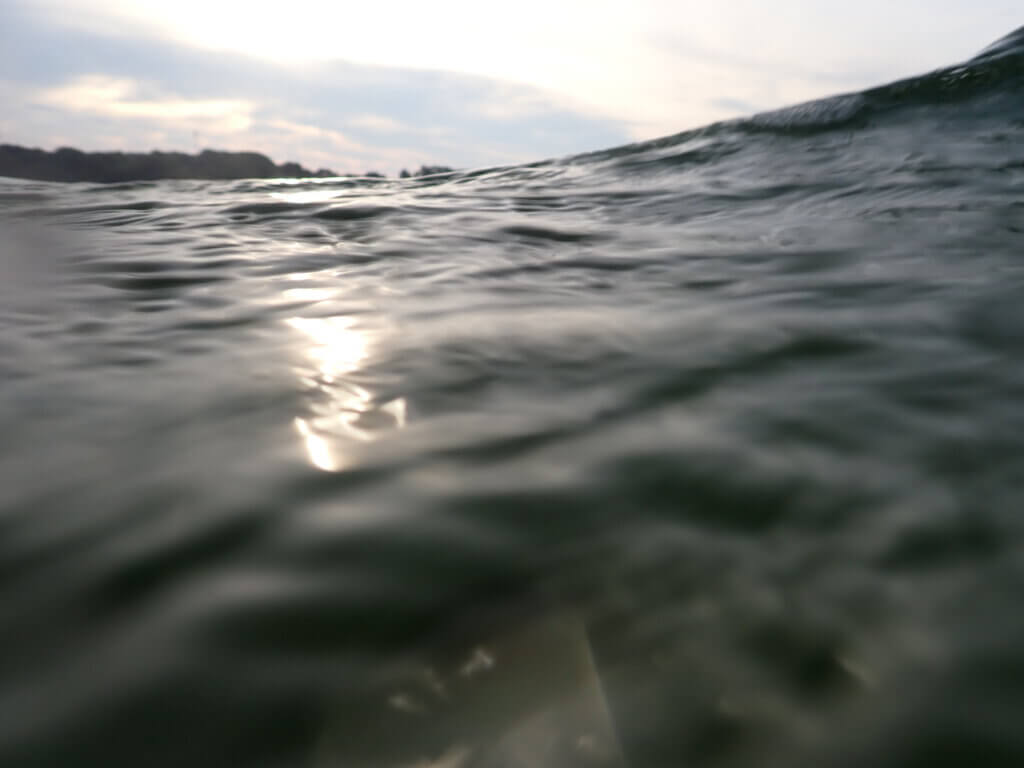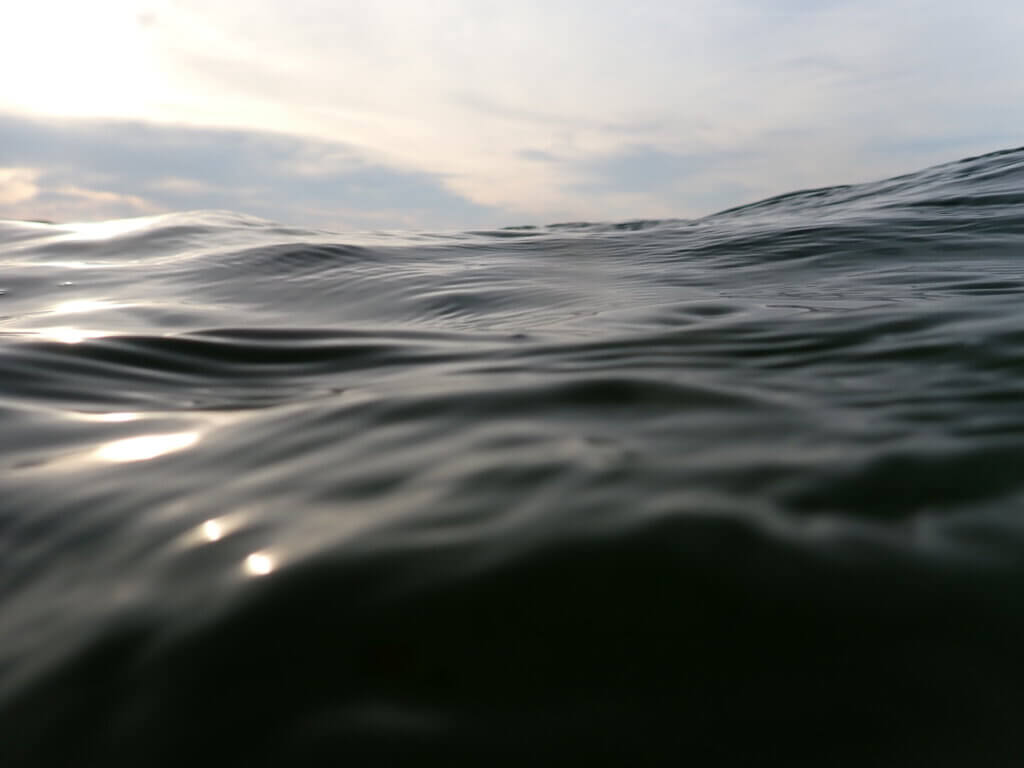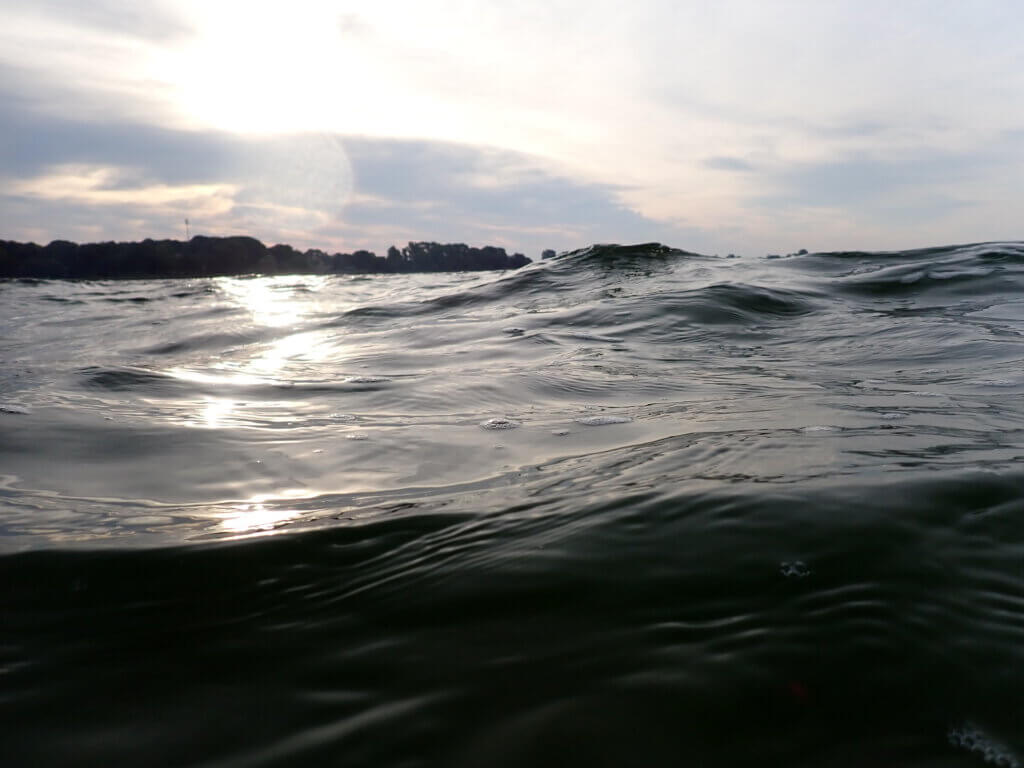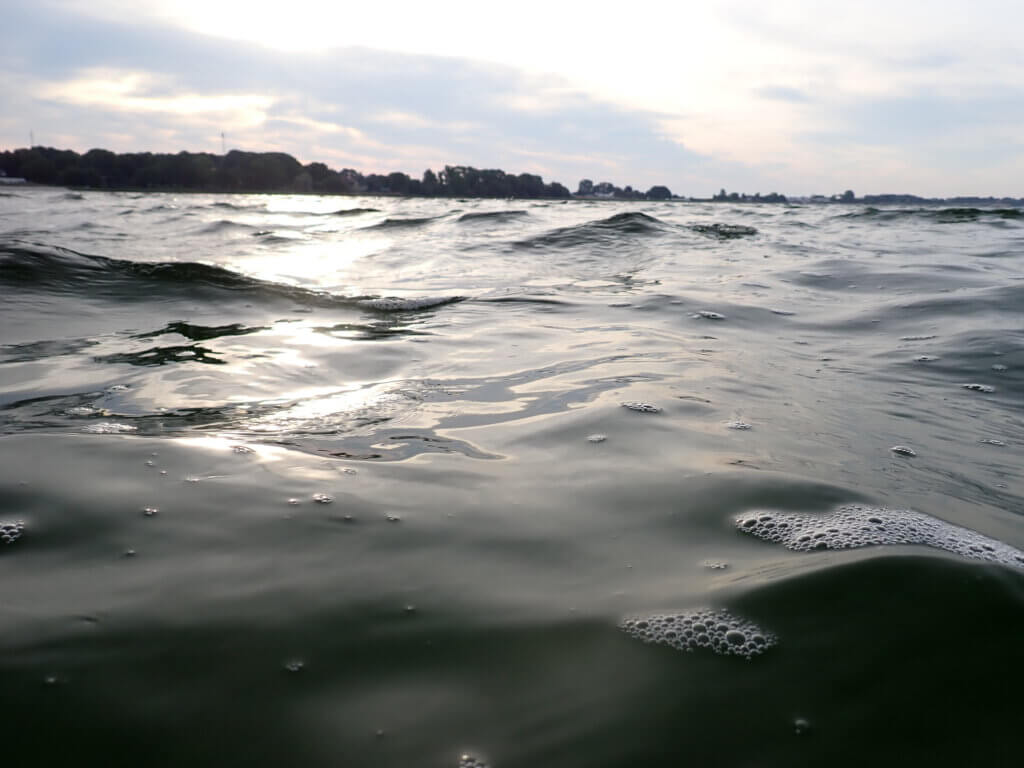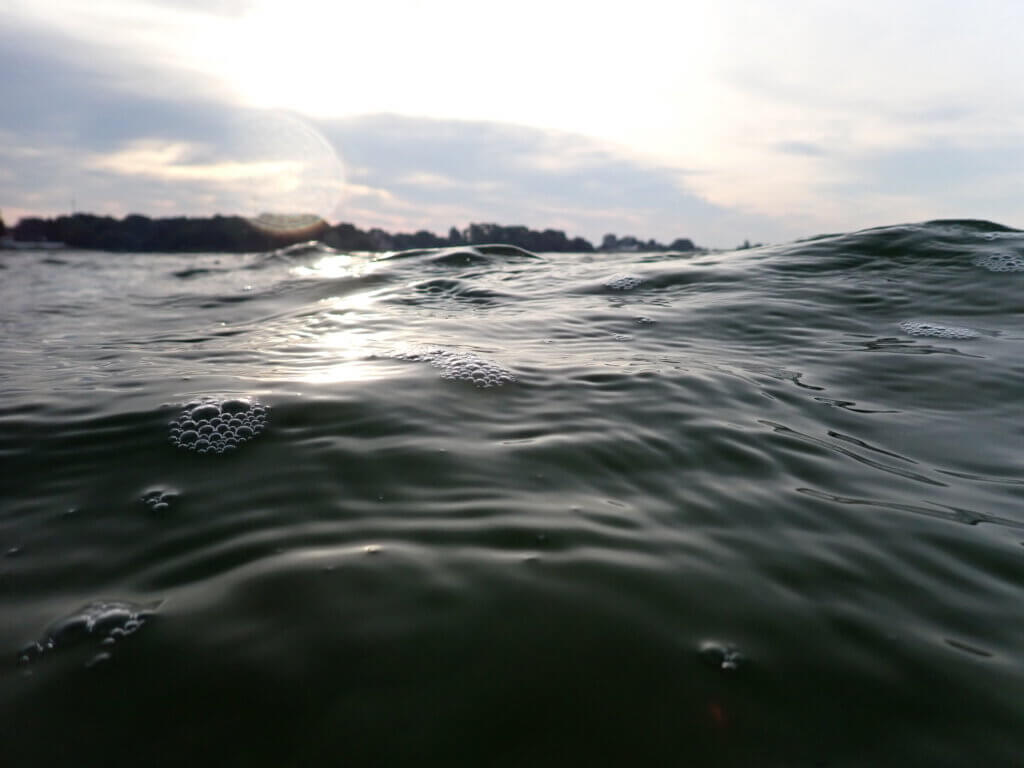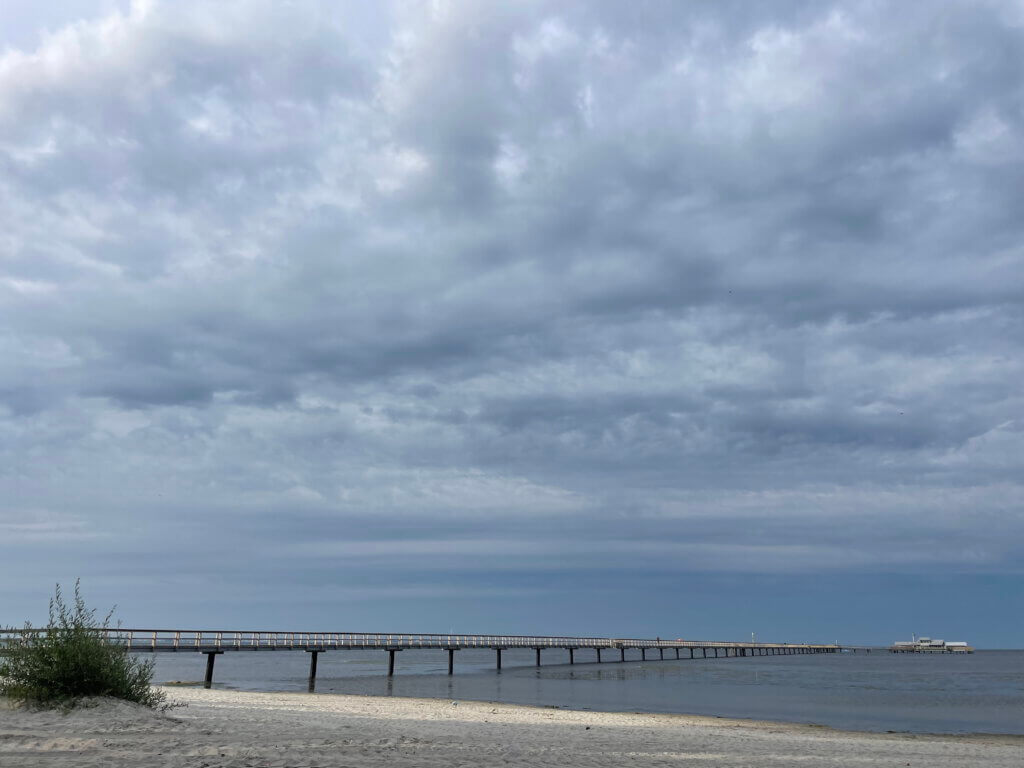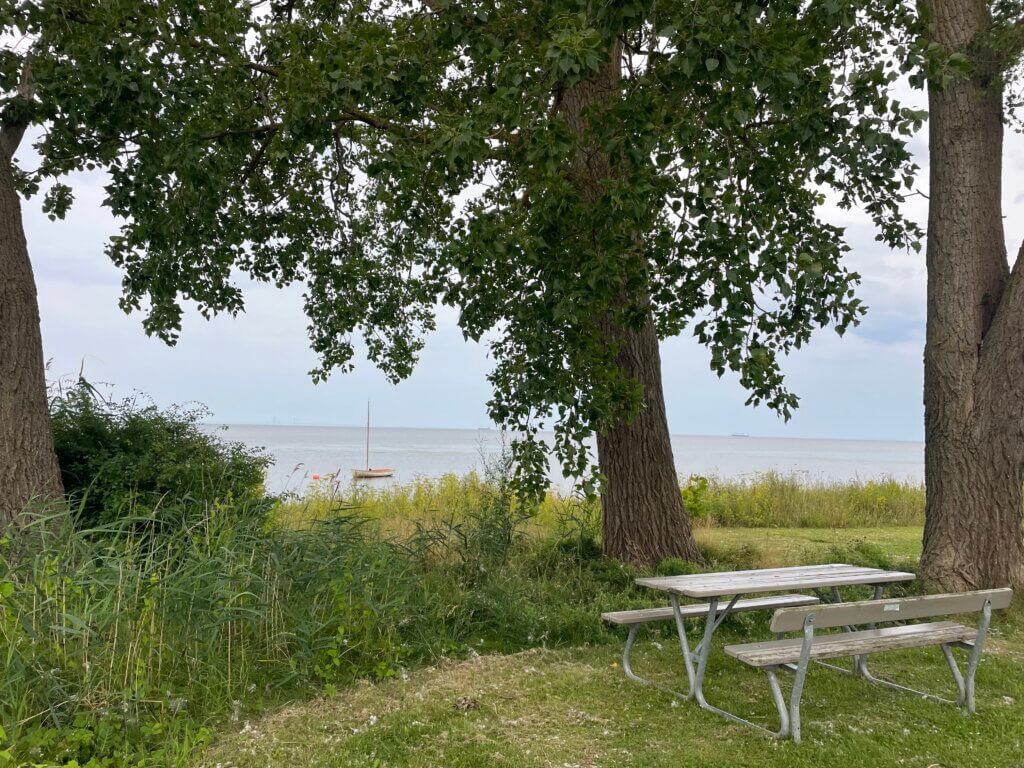
On redirecting attention
Yesterday morning I went for my morning swim and then sat down at the beach afterwards and drank my coffee. I have been thinking a lot about the “turning the gaze” / “redirecting attention” part of the recent Biesta work that I read, it resonates with me so much!
For example, the featured image above is one of my favourite wave pictures recently. Why? Because it shows the things you can observe when your eyes are right above the water surface. You get a much better idea of the height of the waves than you do when you are looking down on the water surface from a pier, or looking at it from the beach. You see all this movement, all these details, all the different scales at play at the same time. In the picture above, you see the dark shadows on a wave crest that is already plunging over, towards us.
On the picture below, taken from a tiny bit higher up, you see the groups of capillary waves — all those long, parallel wave crests — riding on top of much longer-wavelengths waves.
Below again, you see very weak remnants of capillary waves that are not directly forced anymore and therefore spreading out, dissipating.
In the image below, you again see some of the capillary wave groups, and I have no idea what is going on on the wave in the foreground with this inverse waffle pattern.
And here, you see a long wave raising far above the horizon (ok, technically just because I managed to get the camera low into the wave crest) and its crest starting to break.
And below, do you see how even though at first glance the surface looks fairly smooth, there are remnants of capillary waves everywhere once you look closely?
One feedback that I got consistently back when I still did regular wave watching posts on Instagram was that once people had started looking at water the way I do, they could never go back to just seeing it the way they did before, suddenly there were always structures wanting to be explored.
The “wanting to be explored” is also something that resonates with me in Biesta’s work when he talks about world-centred education where we are opening up to the questions and demands that the world is bringing to us. With water, there is always the question of why the surface looks the way it looks. Is it the wind? A ship? Animals? Waves coming in from far away? Something dripping somewhere?
But what would it be like if we could turn people’s attention towards sustainability questions the way it works so easily for wave watching. Always seeing the questions and demands that the world has for us. What would that mean, and how could that work?
I don’t know how to do it yet (and by the way, do you notice the beautiful crisscross pattern of capillary wave groups above?!), but that seems like a good thought to follow. Also, of course, wave watching ends with having figured out what causes the pattern, whereas sustainability questions would only really start there, so maybe it can only get us so far. But worth a shot?
And as always, my favourite bench, now moved more closely under the trees…
